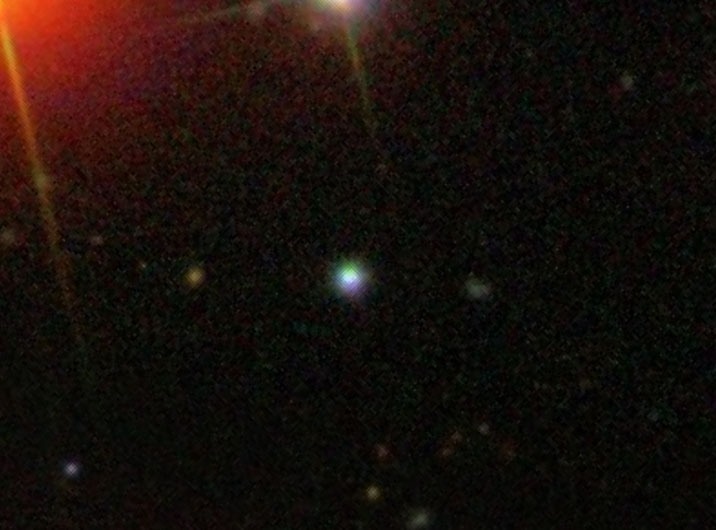A star with a chemical makeup unlike anything they have ever seen has been found by astronomers on the edge of the Milky Way Galaxy. It is consistent with theoretical predictions for the chemical signature of extremely large, very early stars.
 An optical image of LAMOST J101051.9+235850.2 taken from SDSS. It is 3000 light-years away in the direction of the constellation Leo, and is slightly less-massive than the Sun. Image Credit: SDSS/NAOJ
An optical image of LAMOST J101051.9+235850.2 taken from SDSS. It is 3000 light-years away in the direction of the constellation Leo, and is slightly less-massive than the Sun. Image Credit: SDSS/NAOJ
The strongest proof to date that huge stars were present in the primordial stars can be found in this. A footprint like this is the most that can be hoped for, as models indicate that such stars would not have left behind any other remnants.
It is believed that stars that are hundreds of times more massive than the Sun were among the initial generation of stars in the universe. In a short period of time, a star this massive would have been entirely destroyed, leaving no trace for scientists to investigate.
Compared to gas emitted by the explosions of less-massive, longer-lived stars, the gas ejected by the very early, extremely big stars would have had a distinct chemical composition. The subsequent generation of stars is built using this gas.
Therefore, a second-generation star that bears the chemical signature of a first-generation forebear could yield information about the earliest stars in the Universe. However, the initial stars' imprints will be covered by those of subsequent, further supernovae.
To uncover a clean, unpolluted footprint left by the first-generation stars, astronomers are searching for the first-generation stars that are still in existence.
A collective effort of astronomers from Japan’s National Astronomical Observatory (NAOJ), China’s National Astronomical Observatories (NAOC), and other institutions used the Chinese survey telescope LAMOST to determine the oldest stars in the Milky Way Galaxy and calculated their chemical compositions with the NAOJ’s Subaru Telescope.
Among them was LAMOST J1010+2358, which had a chemical composition that matched the expected signature of first-generation stars. This is the clearest sign of very massive first-generation stars discovered so far, and it strongly supports the notion that stars with masses greater than 140 times that of the Sun evolved in the early Universe.
Journal Reference:
Xing, Q.-F., et al. (2023) A metal-poor star with abundances from a pair-instability supernova. Nature. doi:10.1038/s41586-023-06028-1